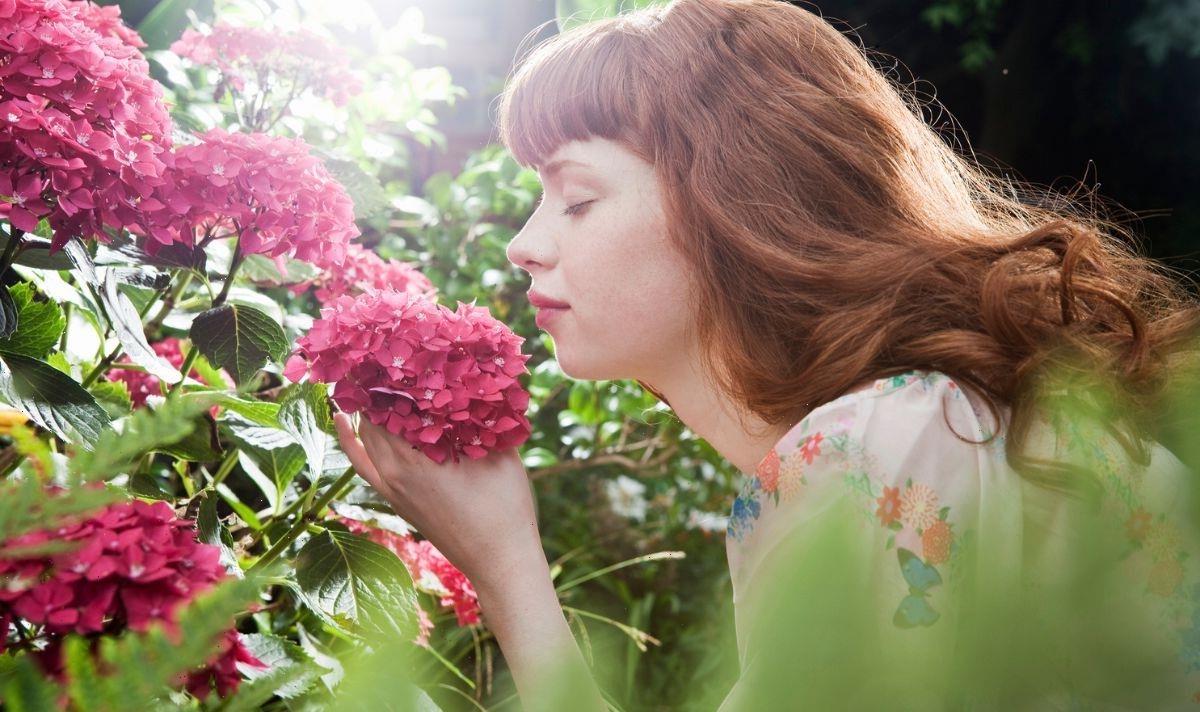
The only thing that can be more disappointing than hydrangeas not blooming at all is a poor showing. Often hydrangea flowers will come in smaller, or the plant may only have a few blossoms instead of being covered in beautiful blooms. There are even times when the flowers just seem washed out. To avoid this, Blooming Lucky blogger, Louise Findlay-Wilson, has spoken with Express.co.uk to share how to ensure hydrangeas are a “feast of flowers”.
She said: “Hydrangeas are gloriously uncomplicated plants. Follow a few simple steps and they will reward you with luscious, large, long lasting blooms.”
Location
Location is key for gardeners who want to get the best out of their hydrangeas as some varieties tend to wilt if they receive too much sunlight. Louise said: “The mantra right plant right place is so true with hydrangeas. Ideally they like morning sun and afternoon shade.
“Have them in such a location and their blooms are much more long lasting. If you can’t offer them deep shade in the afternoon, don’t panic. The main thing is to avoid having them blasted by full sun all day.”
Sharing a photo of a line of 10 Annabelle hydrangeas under small trees. The expert explained: “Here they get a generous dose of sun in the morning but are in dappled shade in the afternoon, and to be honest that works a treat.”

Bud protection
Flower-bud protection is the goal of caring for hydrangeas in winter for them to shine in spring and summer.
Louise explained: “The classic lacecap and mophead hydrangeas flower on old wood. With these varieties the buds form in autumn so you may want to protect them – and their would-be buds – from winter winds and frosts.”
To do this gardeners can make a frame for it. Simply place some wooden stakes around the plant and wrap chicken wire around the posts to create a kind of windbreak. For those who have chicken wire, bubble wrap can work well.
Fill the frame with things like leaves to protect the plant from the cold. Then, very carefully, remove all of this once the worst of the weather is over. Again all the time taking care not to damage any buds.
DON’T MISS
Five features that makes a house look ‘cheap’ – ‘big turn off’ [EXPERT]
‘Quick rule’ when loading tumble dryers for optimum energy efficiency [INSIGHT]
‘Soak off’ stubborn air fryer grease with 4p item – ‘works like magic’ [TIPS]
Pruning
There are two types of hydrangeas, ones that grow on old wood and the other that grows on new wood. When it comes to pruning those on old wood, they should be only cut back lightly, if at all.
Louise said: “Clearly with lacecap and mophead varieties which produce their flowers on old wood, you mustn’t prune them back hard, or you’ll prune away this summer’s flowers – all that bud protection will have been for nothing.
“In mid spring carefully cut back the flower head to just above the top set of lovely plump buds that are forming – you will see them just under the dead flower head.”
Alex Kantor, gardening expert at Perfect Plants Nursery, agreed with not pruning hydrangeas goring on old wood. He told Express.co.uk: “Hydrangeas like the native oakleaf hydrangea bloom on old wood, so if you prune in winter or spring, you risk cutting off that year’s blooms. The best time to prune is in late summer once the blooms fade to allow wood to grow before spring.”

However, when it comes to hydrangeas growing on new wood he claimed that they can be pruned now. The expert said: “Bigleaf hydrangeas and panicle hydrangeas like the limelight variety bloom on new wood. So it’s essential to prune in late winter through early spring to ensure plenty of new growth before the active blooming season begins.”
Feeding
Hydrangeas need to be fed in order for them to reach their full potential. Louise said: “To give your hydrangeas a real kick-start to the season, put a generous amount of organic matter around them. I do this in March.
“Ideally this will be compost from your own heap. As this is broken down, the nutrients will be released to your hydrangeas just when they need them and in good time to help them produce healthy strong flowers.”
Fertilising is one of the main ways to grow bigger hydrangeas, according to Alex. He said: “Fertilising is another crucial task to mark off your garden checklist.

“Without proper nutrients, hydrangeas won’t bloom. Applying an all purpose fertiliser every spring ensures they have the nitrogen, phosphorus, and potassium they need to produce big flowers.”
Watering and mulching
Lastly, gardeners should think about water and mulch as hydrangeas can be thirsty plants. Louise warned: “If we have a very dry summer like last year, they may well struggle. The plants wilt and the blooms suffer.
“So keep an eye on your plant and water them if they start to droop. But to help conserve water, mulch your hydrangeas too.
“Put mulch down – a good three inches deep – around the base of each plant, but not touching the stems. This mulch could be shredded leaves or bark. Put the mulch down after watering, and it will help keep the plant moist and a little insulated.”
Source: Read Full Article
